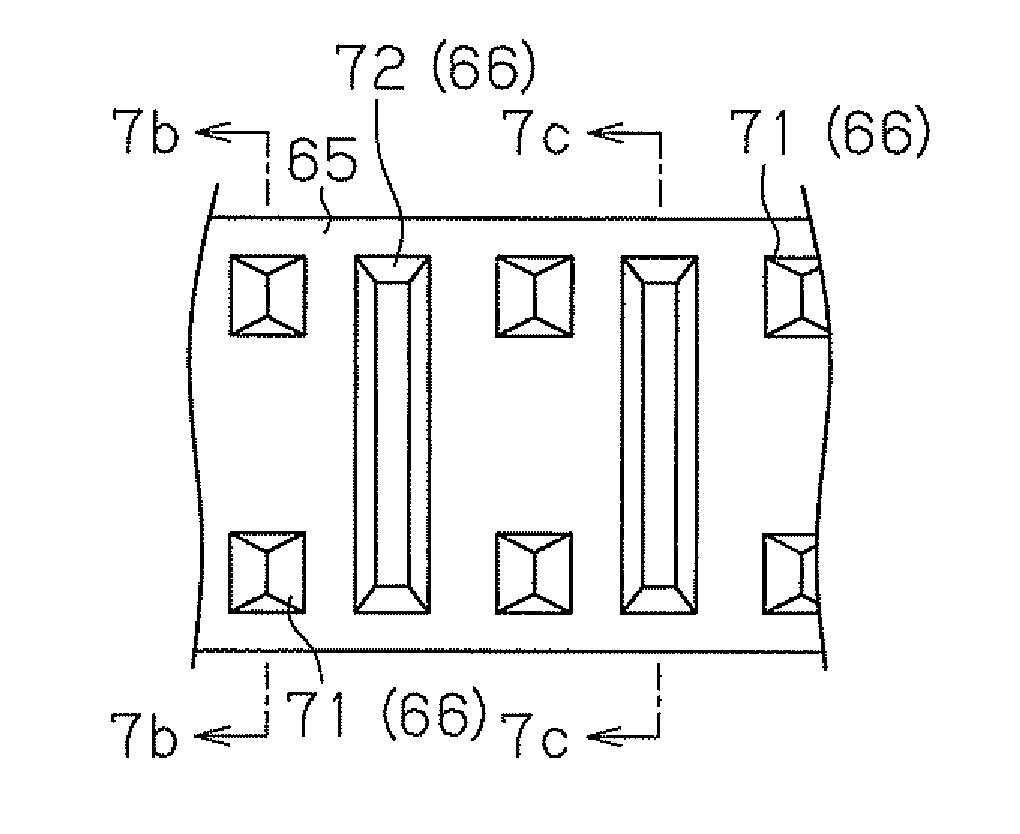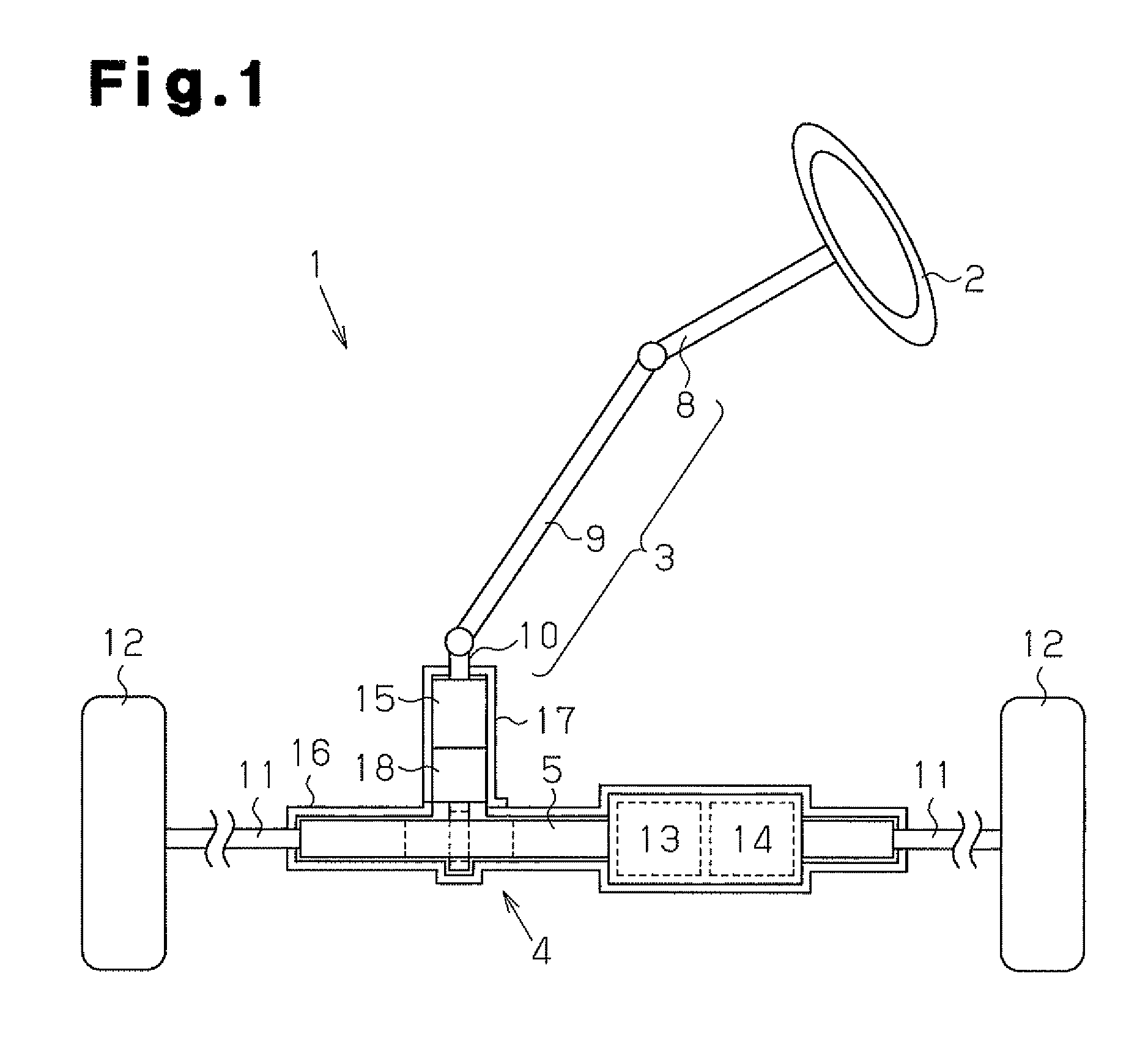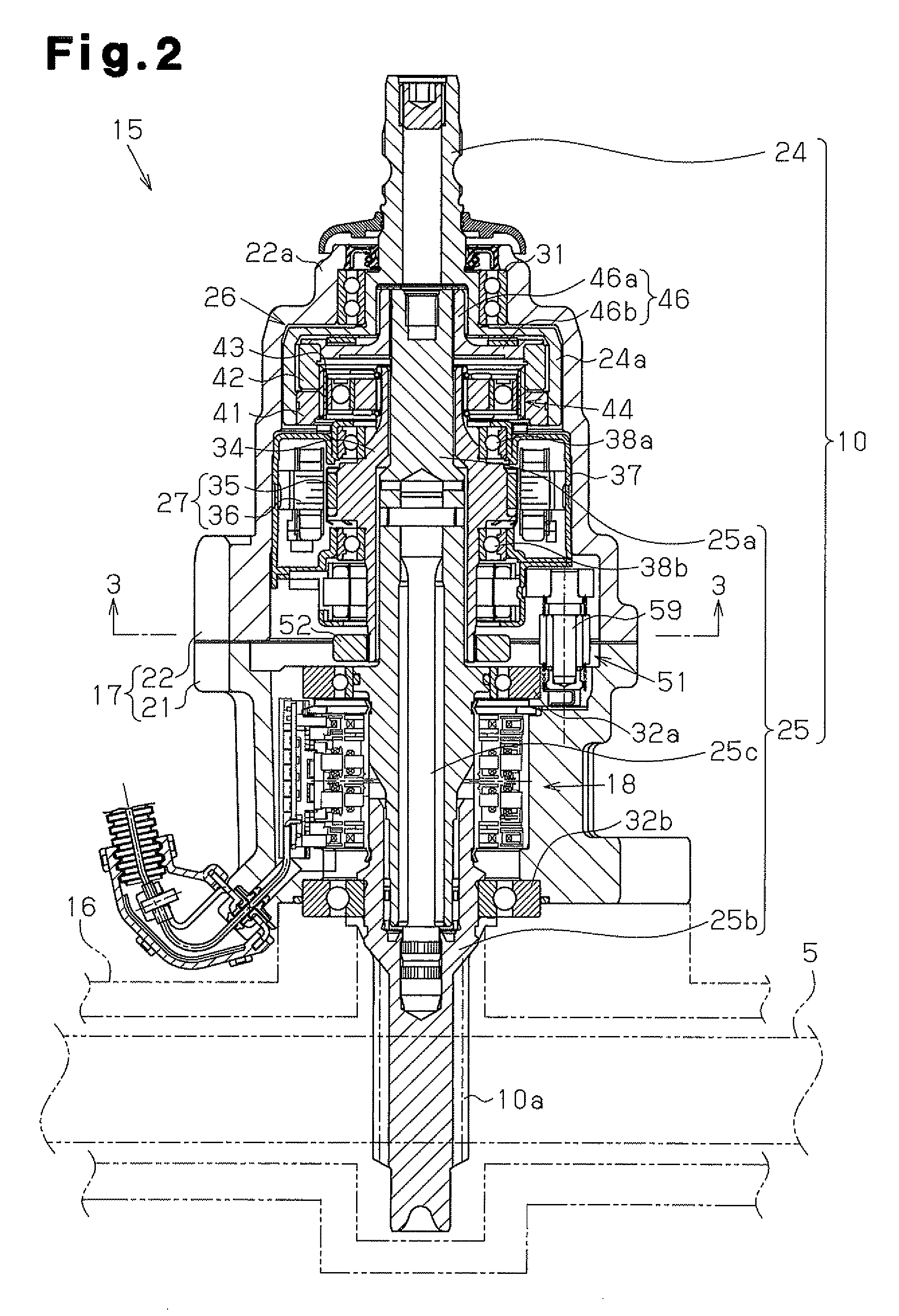Torque limiter, variable transmission ratio device, and tolerance ring
a technology of variable transmission ratio and tolerance ring, which is applied in the direction of slipping coupling, coupling, gearing, etc., can solve the problems of variable transmission ratio device and excessive slipping torqu
- Summary
- Abstract
- Description
- Claims
- Application Information
AI Technical Summary
Benefits of technology
Problems solved by technology
Method used
Image
Examples
first embodiment
[0041]Hereinafter, a first embodiment that embodies the present invention is described with reference to FIG. 1 to FIG. 5. The present invention is described by defining the upper side and the lower side as shown in FIG. 2.
[0042]As shown in FIG. 1, in a vehicle steering apparatus 1, a steering wheel 2 is fixed to a steering shaft 3. The steering shaft 3 is joined to a rack shaft 5 by a rack-and-pinion mechanism 4. Rotation of the steering shaft 3 according to a steering operation is converted into reciprocating linear movement of the rack shaft 5 by the rack-and-pinion mechanism 4. In the steering shaft 3, a column shaft 8, an intermediate shaft 9, and a pinion shaft 10 are joined to each other. To both ends of the rack shaft 5, tie rods 11 are joined, respectively. Reciprocating linear movement of the rack shaft 5 according to rotation of the steering shaft 3 is transmitted to knuckles (not illustrated) via the tie rods 11. Accordingly, the turning angle of steered wheels 12, that ...
second embodiment
[0070]Next, a second embodiment that embodies the present invention is described with reference to FIG. 6(a) to FIG. 6(c). The same configurations as in the first embodiment are provided with the same reference symbols, and description thereof is omitted.
[0071]As shown in FIG. 6(a) to FIG. 6(c), the main protrusion 71 is respectively formed near each of open ends of the ring main body 65. The main protrusions 71 are disposed at a predetermined interval in the axial direction of the ring main body 65.
[0072]The second embodiment provides the following effects in addition to the effects of (1) and (2) described above.
[0073](3) An impact is applied to the lock holder 52 and the axis of the lock holder 52 may be tilted with respect to the axis of the motor shaft 34. In this case, the contact states between the main protrusions 71, sub-protrusions 72 and the lock holder 52 become uneven, and frictional resistance between the protrusions 71 and 72 and the lock holder 52 may be reduced. In ...
third embodiment
[0074]Next, a third embodiment that embodies the present invention is described with reference to FIG. 7(a) to FIG. 7(c). The same configurations as in the first embodiment are provided with the same reference symbols, and description thereof is omitted.
[0075]As shown in FIG. 7(a) to FIG. 7(c), the main protrusion 71 is respectively formed near each of both open ends of the ring main body 65. The main protrusions 71 are disposed at a predetermined interval in the axial direction of the ring main body 65. The sub-protrusions 72 are formed substantially into trapezoidal quadrangular pyramids. The sub-protrusion 72 extends from the vicinity of one open end to the vicinity of the other open end of the ring main body 65. The apex of the main protrusion 71 extends along the axis. The sectional shape of the main protrusion 71 orthogonal to the axis is substantially triangular. The main protrusions 71 and the sub-protrusions 72 are formed by plastically deforming the ring main body 65 by me...
PUM
 Login to View More
Login to View More Abstract
Description
Claims
Application Information
 Login to View More
Login to View More - R&D
- Intellectual Property
- Life Sciences
- Materials
- Tech Scout
- Unparalleled Data Quality
- Higher Quality Content
- 60% Fewer Hallucinations
Browse by: Latest US Patents, China's latest patents, Technical Efficacy Thesaurus, Application Domain, Technology Topic, Popular Technical Reports.
© 2025 PatSnap. All rights reserved.Legal|Privacy policy|Modern Slavery Act Transparency Statement|Sitemap|About US| Contact US: help@patsnap.com



